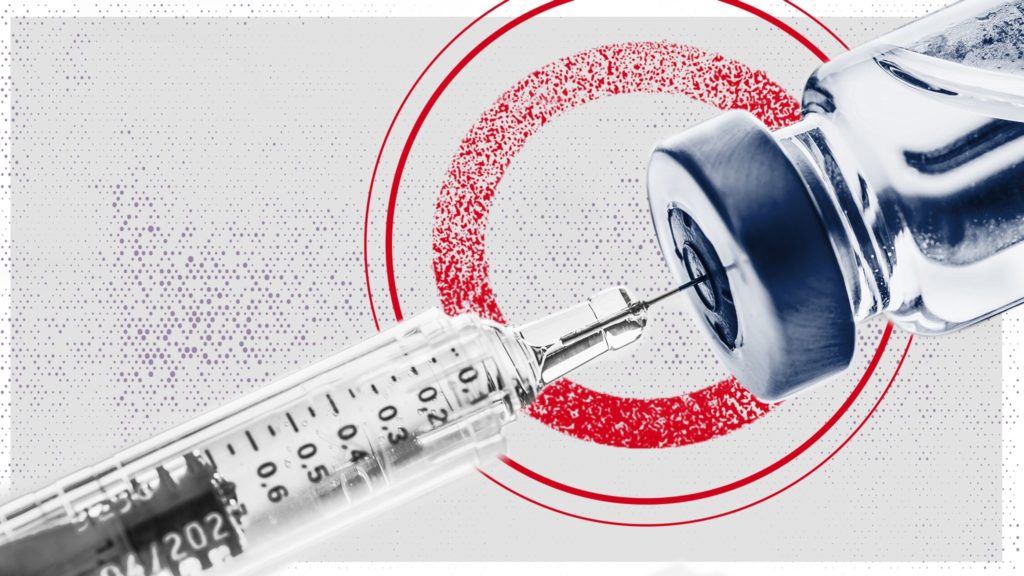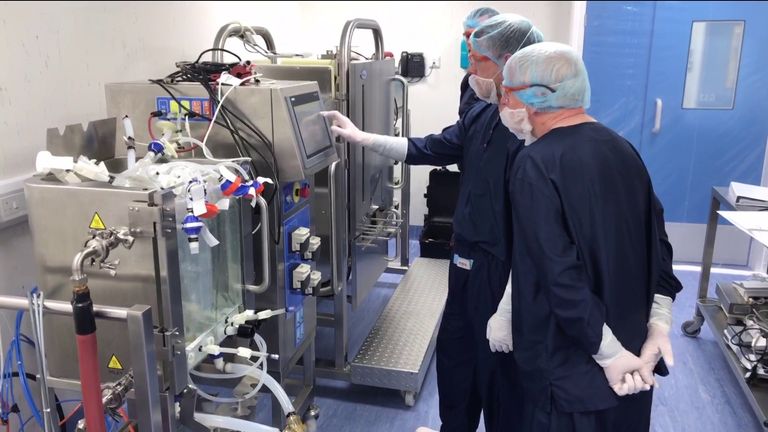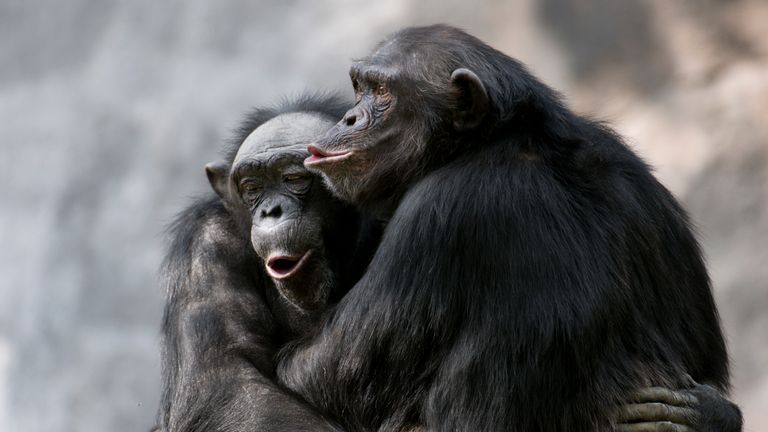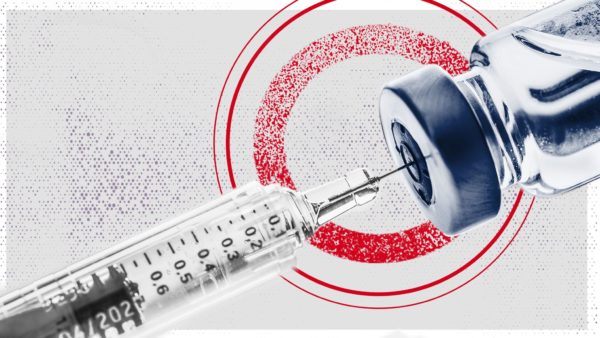According to the government, 30 million vaccine doses could be available across the UK in September – if a vaccine being developed at the University of Oxford works.

Researchers there are developing a vaccine for COVID-19 based on genetic manipulation of a common cold virus which normally infects chimpanzees.Sponsored link
In Sunday’s daily briefing, Business Secretary Alok Sharma said the first clinical trials were “progressing well” with all of the volunteers for phase one of the trials receiving their dose earlier this week.
The trials of the vaccine – officially known as ChAdOx1 nCoV-19 (pronounced Chaddox One) – began on 24 April to see whether it can effectively protect healthy people from the virus.
How is the trial working?
The researchers have recruited up to 1,102 participants across multiple laboratories in Oxford, Southampton, London and Bristol.
These volunteers have been randomly allocated either a real dose of the trial vaccine or a meningitis vaccine.
An even smaller group of 10 volunteers are going to receive two doses of the candidate vaccine four weeks apart.
Who is participating?

The volunteers are aged between 18 and 55, and must not have tested positive for COVID-19.
They need to be in good health, neither pregnant nor breastfeeding, and can’t have previously taken part in a trial with an adenoviral vaccine (based on the common cold virus) or received any other coronavirus vaccines.
How does the vaccine work?Coronavirus: Infection numbers in real time
Dosages used in the trial are measured based on the scientists’ experiences with other vaccines.
The volunteers won’t know until the end of the trial whether they had received the real vaccine or the meningitis jab.
The dose used in the trial was chosen based on previous experiences with other ChAdOx1 based vaccines.
What will the volunteers do?Coronavirus lockdown: What you can do – and what you still can’t
The participants have been given an electronic diary in which they need to record any symptoms they are experiencing in the seven days after they receive the vaccine and for the following three weeks.
Researchers will take bloom samples during follow-up visits to assess their immune response to the vaccine and to check the symptoms the patients are recording.
Crucially, if the volunteers develop COVID-19 symptoms during the study, they can contact a member of the clinical team who can assess if they have become infected.
If they become seriously unwell then they can be admitted to hospital for further checks.
When will we know if it works?

The researchers will need to compare the number of COVID-19 infections in the meningitis group with the number in the vaccinated group.
So it is necessary for some of the volunteers to catch the coronavirus.
But how quickly the number required is reached depends on the levels of the virus in society at large.
Across the country more than 243,300 people have tested positive for the virus as of Sunday – with 3,142 new cases reported as of 9am.
If transmission remains high then the researchers believe enough data may be available in a couple of months, but it could take up to six months.
What is in the vaccine?

ChAdOx1 nCoV-19 is made from ChAdOx1, a weakened version of the common cold virus (adenovirus) which causes infections in chimpanzees.
The virus has been manipulated so that it can’t harm humans, but also contains part of the coronavirus so that it would trigger the body’s immune response to COVID-19’s spike proteins which it uses to enter human cells and multiply.
At the same time as the Oxford study, researchers at Imperial College London are working on their vaccine candidate and will enter clinical trials by mid-June.

Leave a Reply
You must be logged in to post a comment.